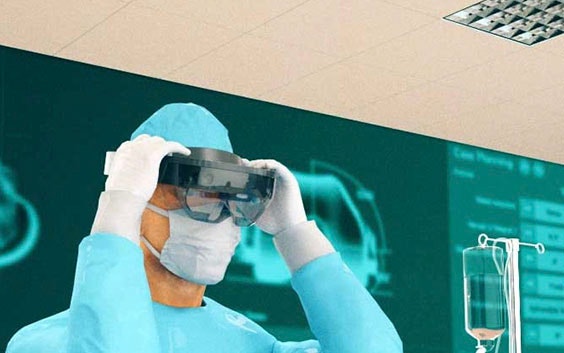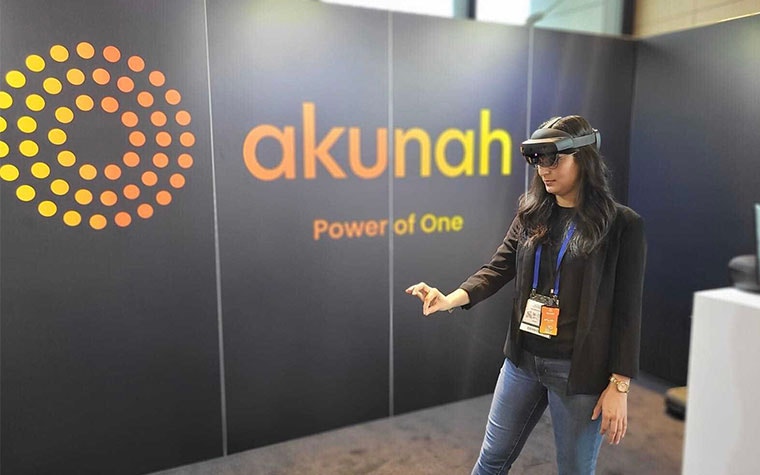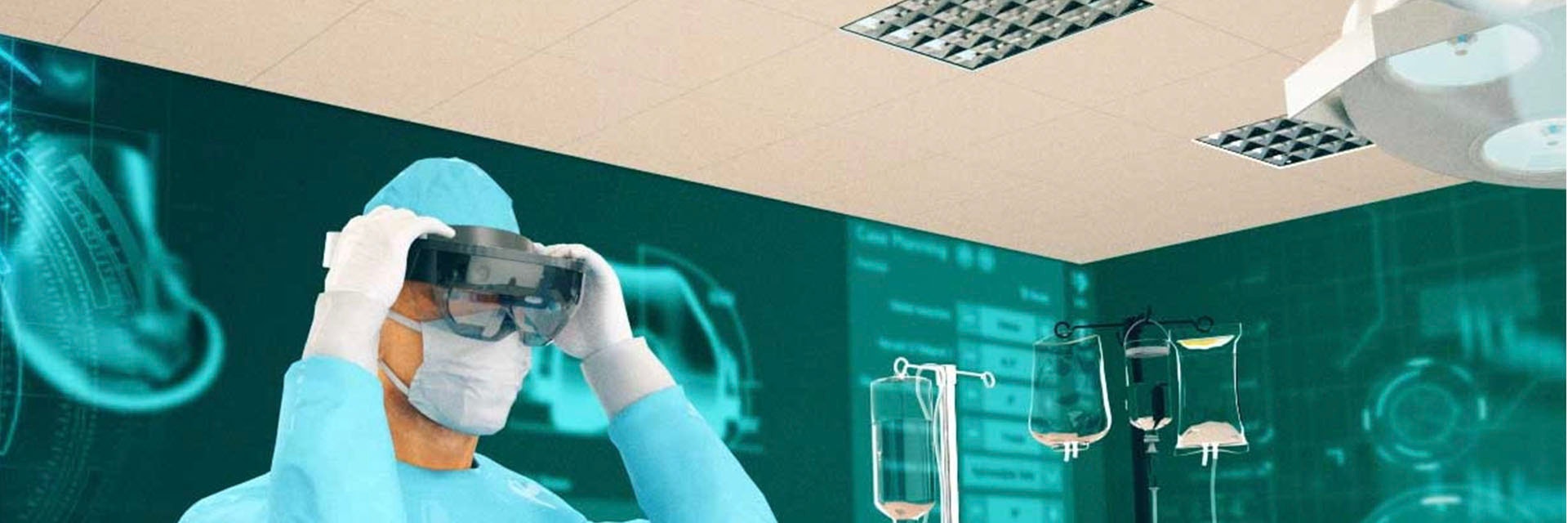
INTERVIEW
Augmented Reality Set to Disrupt Surgical Practices: A Q&A with the CEO of Akunah
As an expert surgeon and researcher in his field, Dr. Ashish Gupta, an orthopaedic surgeon and shoulder specialist from Brisbane, Australia, believes that augmented reality (AR) has the power to revolutionize surgery and surgical training.
Dr. Gupta has been paving the way for the use of AR in shoulder surgery through his research program QUASR — the Queensland Unit for Advanced Shoulder Research and its data analytics offshoot Akunah
His exploration into computational modeling four years ago brought Dr. Gupta and Materialise together. Dr. Gupta and his team use the Materialise Mimics Innovation Suite as the backbone of his research programs at QUASR and Akunah to deliver advanced 3D solutions that can be applied in a point-of-care space.
We spoke with Dr. Gupta about the current state of augmented reality in surgery and how this technology might radically alter the clinical landscape for personalized orthopaedic solutions and offer patients more consistent and confident outcomes.
Different technologies support surgeons in improving surgical execution, such as 3D-printed patient-specific instrumentation (PSI), robotic surgery, navigation tools, and, more recently, the development of mixed reality tools. Where do we stand today with the use of these technologies in orthopaedics?
A few things have happened in the field of enabling technologies in the past two years. In the case of PSI, its production has become challenging for companies that don't have PSI expertise because the class of the device has changed. PSI is governed as a medical device now and there is much more control over the development and quality of the final product. Not every company is able to print a device that meets the new regulatory requirements anymore, but I think this is a positive step because industry requirements were too loose.
From a surgical perspective, I believe that any technology that is more mobile will always be superior to a technology that requires infrastructure, which is expensive and clunky to set up. For me, technologies like AR and PSI have the upper hand compared to a robot, which requires a lot of capital investment, and I believe that mixed reality and augmented reality will be the future.
How is Akunah positioned in this field?
Akunah is a company deeply embedded in tech. We work with data analytics and use computer modeling for planning primaries and complex revision arthroplasty. The Materialise Mimics Innovation Suite forms the backbone of QUASR, but we also use the technology in computer modeling solutions we provide our clients and customers globally. I believe that the software is quite powerful and enables us to bring substantial benefits to research and at the point of care.
We are also firmly positioned in the research and application of AR to enable surgery.
How will AR impact the future of enabling technology in surgeries?
I think AR will completely change how humans behave and interact with technology. It is really going to empower us as humans to achieve and see things that we were not able to before. So for me, it is the obvious future. And it's not only going to revolutionize surgery and surgical training but life in general.
“The market needs to start using AR to understand that it's not just a gimmick but a powerful enabling technology.”
— Dr. Ashish Gupta
Can you explain how AR is currently used in orthopaedics?
Currently, it is used to visualize 3D models intraoperatively, which would have been 3D-printed or shown on a computer screen. So the biggest advantage of AR is that you, as a surgeon, do not need any extra infrastructure. My hands are free, so there's nothing to be sterilized, and I can interact with a hologram and thin air. And when I no longer want it, I just take my headset off and it's gone.


It frees up capital space in the theater. It reduces logistics. It really powers me as a surgeon to look beyond the wall because it gives me three-dimensional anatomy. And I think this is priceless because it's available anywhere at any point in time.
“The future of AR is in markerless, intra-op navigation.”
Accessibility is a primary benefit. Is this technology easy to use?
We presented a study at the annual meeting for the Shoulder & Elbow Society of Australia that compared ease of use with AR technology among three surgeons. I was part of this study, representing an experienced surgeon using AR technology regularly for the last three years. The second surgeon was another experienced colleague who had only 30 minutes of training, and the third was a junior surgeon who also had just 30 minutes of exposure to AR. The outcome we each got from the technology was the same. Importantly, it allowed the junior surgeon to get the same level of information that my experienced colleague and I had.


If the learning curve of AR is extremely short compared to other technologies, what obstacles do you foresee in adopting this technology?
The obstacle with this technology is that it is not mature enough. AR still has a long way to go, with platform and support systems that still need to be developed. That will only improve with all of us working together in the same direction. The market needs to start using AR to understand that it's not just a gimmick but a powerful enabling technology. I am confident this will happen, but it will take some time.
How will the evolution of AR devices influence the adoption of the technology?
The launch of the HoloLens 2 has allowed us many more possibilities than before. It's a fantastic and revolutionary device compared to what was available before. But this is a fast-moving tech space, and what we are discussing today won't be relevant anymore in 2024. We are talking about technology cycles that last 5-7 years. Contrast this with the development of a patented implant that lasts around 17 years. In high tech, your technology will last 36 months. And if you don't innovate, you'll just be left behind.
“Technologies like AR and PSI have the upper hand compared to a robot, which requires a lot of capital investment.”
What is the next frontier for AR?
The future of AR is in markerless, intra-op navigation. Currently, it is being used to better visualize preoperative planning, displayed within the AR platform. The difference with a computer screen is that you can interact with that model and see it in three dimensions.
This is already very important because that's what you're trying to achieve as a technology company or a personalized care solutions provider — to give people that personalization for each case and each solution. But the tool is not yet a navigator because there's no navigation built into it — that's where the future is.
Do you anticipate any other significant breakthrough that will disrupt orthopaedics in the next five years?
Apart from AR, I think the biggest breakthrough is personalization with more data and analytics. We'll be able to provide solutions that are bespoke and based on outcomes rather than just expert advice.
The transformation is going to be that the solution given to the patient in front of you is going to be based on predictive data analytics, and I think that is going to revolutionize what we do in the next three years with AR.
The important thing for people to understand is that this is the future. You cannot fight it. It's like trying to say I don't want a smartphone; I don't want to use the internet; I don't want to use email. The sooner you embrace the technology, the sooner that you find its uses, the more you will be able to benefit from it.
I firmly believe that the use of data and AR is here to stay and it's just going to get better and better.
Want to explore what AR can do for your project?
Download the latest AR demo application from Materialise for free on the Microsoft Hololens Store
L-102753-01
Share on:
You might also like
Never miss a story like this. Get curated content delivered straight to your inbox.
